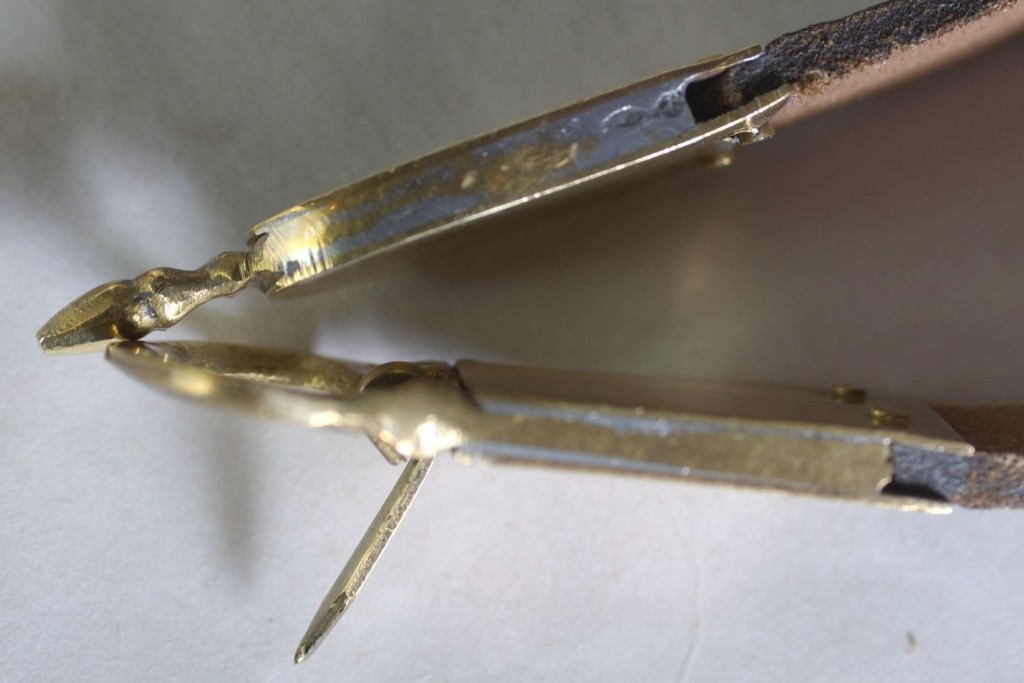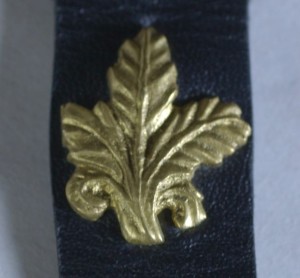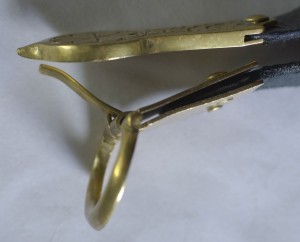Last time I talked about the thickness of the actual metal that was used in the real artifacts verses the metal that was used in the modern belts. Why do we see such a tremendous difference in construction?
Well, most obviously, base metal, which is what brass and bronze are, is cheap today. The artisan is not compelled by cost to try to make the belt fittings as cheaply as possible.
There might also be a level of ignorance on the part of the artisan. They view a larger, heavier item as quality (sort of a reaction to cheaply manufactured stuff from China), and they may honesty not know how large or thick the original artifacts were. Or maybe they have seen some of those Victorian pictures of “Important Historical Figures” wearing large belt buckles.
Why else would a modern artisan choose heavier metal, especially for the cast pieces? Well, to be honest it is easier to cast slightly heavier pieces than lighter ones. The thinner cast pieces have a higher failure rate and require more elaborate molds, or more elaborate masters for lost wax casting.
And we need to also consider how people treat their belongings modernly. In our throw-away society the concept of treating a simple belt as an important “Sunday best” item is very foreign to some people. I have actually had someone tell me that they wanted to be able to throw a fairly elaborate custom piece into the bottom of their armor bag and have it be fine. I refused the commission. If a pre-1600’s person treated the period mounts that I own like this many of them would be crushed. They were intended as decoration. The fact that they have survived for five hundred years, or more, says that at least some of them were sturdy enough, but our modern society sometimes requires more.
If an artisan actually made the belt fittings, or belts, as light as the originals, would people actually want to buy them? I am not sure. Many of these pieces were obviously intended as decorative pieces. Just as we would not expect a decorative pearl necklace to have huge structural integrity and be able to withstand a large weight, these belts were often intended to be a finishing touch to an outfit, rather than a structural part of the garment.
A lack of understanding of how an item is intended to be used, prior to 1600, is a common thing for many modern people. Some classic examples are not understanding what the particular silhouette for a specific dress is supposed to be (compare a Gothic Fitted Gown to an Elizabethan – very different!) or being annoyed when a dress pin bends because you are not wearing the proper underpinnings – which should have taken most of the stress off of the dress pin in the first place.
At this point I should mention that not all pre-1600’s belts, buckles, and belt ends were super lightweight or tiny. There were obviously things like utilitarian sword belts and belts that were sturdy enough to support pouches and game bags. The picture at the end of the article shows one of the clothing styles that really does use LARGE belts and buckles.
But back to size and weight; how could they make cast and formed pieces look heavier than they really are?





